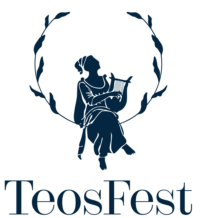According to the ancient geographer Strabo (64 BCE – 24 CE), Teos was first founded by Athamas—hence it was referred to as Athamantis by the renowned lyric poet Anacreon. Later, during the Ionian colonization, it was re-established by Naoklos, the illegitimate son of Kodros, and subsequently by Apoikos and Damasos from Athens, as well as Geres from Boeotia.
Archaeological excavations conducted in the ancient city between 1962 and 1967 revealed that Teos had been inhabited since the Protogeometric Period (circa 1000 BCE). Around 600 BCE, the philosopher Thales of Miletus proposed Teos as the center of the twelve Ionian cities due to its central location in the region, although his proposal was not accepted. Commercial relations of Teos in the 6th century BCE extended as far as Ancient Egypt. Like the rest of Anatolia, Teos came under the control of the Persian commander Harpagos after 545 BCE. Due to the inability of the Ionian League—composed of twelve cities including Teos—to resist the pressure of Cyrus II of Persia on the Greek cities of Western Anatolia, many Teians abandoned the city in 543 BCE and founded the city of Abdera in the Nestos Delta of Thrace (modern-day Avdera, near Xanthi). Additionally, around 544 BCE, the people of Teos established the city of Phanagoria on the Taman Peninsula (in Crimea). However, over time, many of these colonists returned to Teos. The prosperity of the city grew to such an extent that the Teians contributed 17 ships to the Battle of Lade in 494 BCE. As a member of the First Delian-Attic Naval League, the city paid an annual tribute of six talents, like Erythrai (modern-day Ildırı).
An inscription found in Seferihisar reveals that following the earthquake in 304 BCE—which caused widespread damage throughout Ionia—a synoecism (union of cities) was planned by Antigonos Monophthalmos to merge Teos with the neighboring city of Lebedos (modern-day Ürkmez), although this plan was never implemented. Under the reign of Attalos I (241–197 BCE), Teos became part of the Kingdom of Pergamon and later came under Roman control when King Attalos III bequeathed his lands to Rome (138–133 BCE). From 129 BCE onwards, the city was included within the province of Asia under Roman rule. The diversity of architectural remains throughout the city indicates that Teos retained its importance during the Roman Imperial Period as well. Coins minted during the reign of Augustus depict the emperor as ktistes (founder), and his bust was displayed within the temple, indicating the existence of the imperial cult in the city. Moreover, recent excavations have shown that the propylon (monumental gateway) providing the main entrance to the sanctuary of Dionysus, along with the stoas surrounding the temple, were built during the Augustan period. The city, which maintained good relations with Rome, is known to have minted coins until the reign of Emperor Valerian II. Although few tangible remains survive from Late Antiquity, the city appears to have retained a minor presence until the Middle Ages, despite having lost much of its former importance.
Due to the significance of the Dionysian cult in Teos and its surrounding region, the Guild of Dionysian Artists—composed of poets, musicians, actors, and singers—was founded in the city during the 3rd century BCE. Over time, this group came to be seen as a source of unrest and was relocated, first to Ephesus (modern-day Selçuk), then to Myonnesos (modern-day Doğanbey/Çıfıtkale), and finally to Lebedos (Ürkmez). Notable philosophers and artists of antiquity who lived in Teos include Anacreon, Antimachus, Epicurus, Nausiphanes, Apellikon, and the historian Hecataeus.
